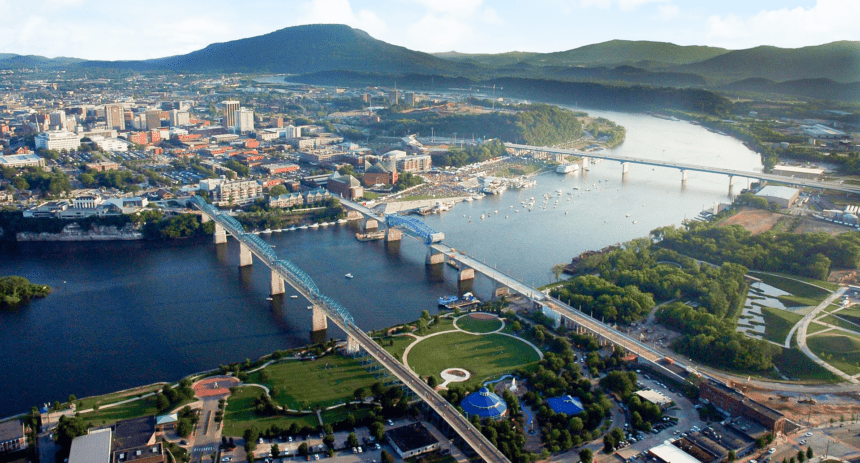City in a Park
Chattanooga adopts a bold plan to make the most of its natural resources
While most of Chattanooga was sleeping May 7, 2023, more than 7.8 million birds migrated over the city. Some stopped for a bite to eat or a cozy branch for a rest. Others enjoyed the sparkle of the moon on the river as they continued their long haul north for the summer. As the sun came up, Chattanoogans began their day– some with a bike ride, swim, or early morning workout in a nearby park. Others took an afternoon hike or just lounged in a patch of sunny grass. The region is one of the most biodiverse in the nation, and community leaders have cast a vision to preserve and connect people to nature with a bold new Parks and Outdoors Plan (POP).
“Parks make cities livable for humans, and great cities have great parks,” says Scott Miller, Administrator of Parks and Outdoors for the City of Chattanooga. “We know without a doubt that the more time you spend in nature, the healthier you are. We live in one of the richest, wildest places in all of North America. Nature is already here, we just put a city in the middle of it. Our vision with the POP is that Chattanooga will be a ‘city in a park.’”
Top of the Pop
Parks and Outdoors staff facilitated a year’s worth of community engagement to create a plan that is both ambitious and realistic. When the city first considered a comprehensive park plan 112 years ago, Chattanooga was much smaller than it is today. That first plan focused on what is now the urban core, and while parks exist in these neighborhoods, many are in poor condition. The last plan rolled out 25 years ago, and even it didn’t fully address the realities of a growing community. Fast-growing regions of the city and those far from downtown have virtually no park land for people to enjoy. Everyone agreed: there’s lots of work to do.
With the help of a steering committee, numerous neighborhood meetings, community workshops, and surveys, the POP recommends six big “first” steps:
- Initiate a neighborhood park initiative to update existing parks and add new parks to fill gaps in the community. Set aside land in anticipation of population growth and development.
- Continue to invest in signature parks essential for Chattanooga’s regional economy and iconic identity.
- Build safe greenways and trailheads to ensure that at least 55 percent of residents have a high-quality park close to home.
- Sustain healthy urban ecological systems and protect our shared cultural landscapes and stories.
- Make rapid targeted improvements and create partnerships that improve the quality of, and activity in, existing parks serving our most vulnerable communities and residents.
- Dedicate adequate resources to care for high-quality public parks that are well-loved and well-used by residents and guests.
The POP recommends using an equity lens to prioritize projects that serve areas of the city with a history of public underinvestment and environmental contamination as well as those that serve areas of high population density. Further, parks planners have a vision to celebrate place. They recommend launching a neighborhood park design initiative to ensure that a neighborhood park is at the heart of each unique community within the city.
Partnerships for Parks
“We intend to empower and strengthen recreational opportunities by nurturing partnerships,” Martin says. In some cases, partnership will manifest as community members and organizations developing programming in parks. Partnership will also be leveraged to design, fund, and even build parks in the future. Already, Benwood Foundation, along with other local philanthropies, is partnering with Parks and Outdoors to provide access to nationally celebrated designers for a redesign of Montague Park to include both soccer fields and Sculpture Fields. Strong relationships with the Trust for Public Land and Nature Conservancy are also integral in developing conservation funding strategies to accelerate POP progress.
“The POP outlines clear community priorities and values for parks, and it is intentionally quiet on organizational silos. This allows government to be a curator more than a delivery agent. That’s a pivot – the POP speaks about where we should go, but ultimately it is agnostic as to how we get there.”
Explore the full Parks and Outdoors Plan here.


